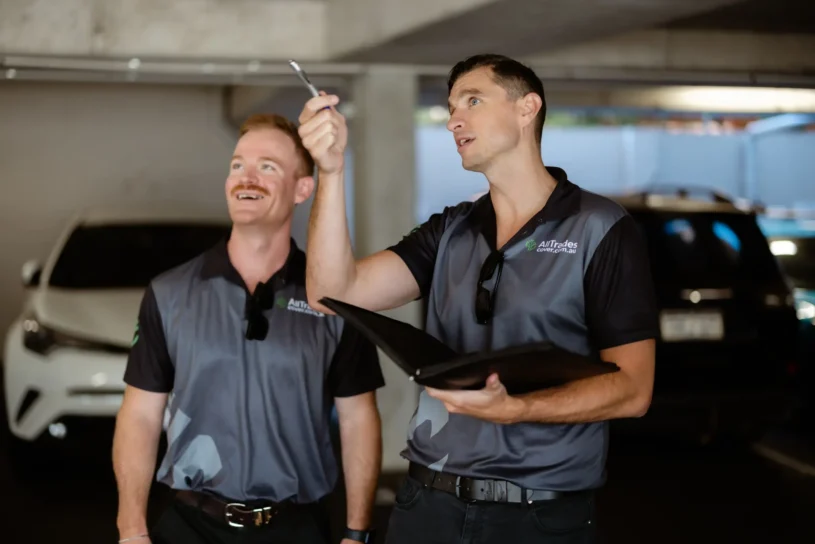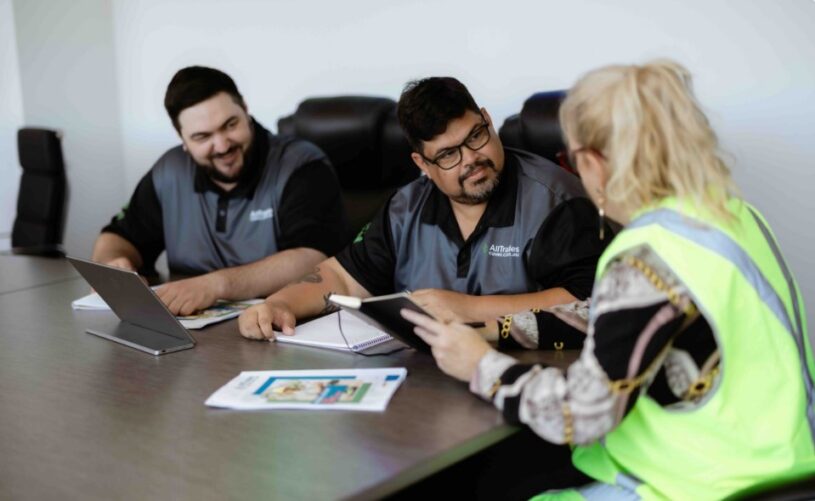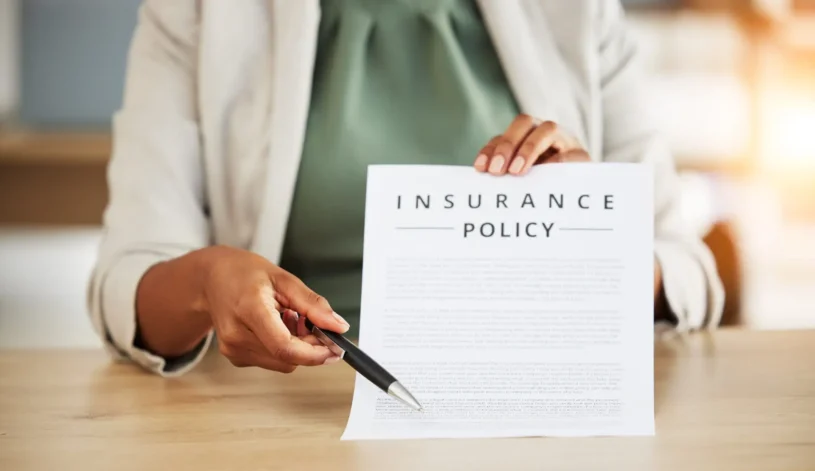When machinery breaks down or sustains damage on a worksite, every hour of delay translates into lost productivity and mounting costs. For contractors and plant operators, the ability to navigate the insurance claims process efficiently can mean the difference between minor disruption and major financial impact. Understanding how to settle machinery damage claims quickly requires knowledge of proper procedures, documentation requirements, and common pitfalls that slow settlements.
This practical guide outlines straightforward steps that help contractors expedite machinery damage claims, ensuring faster repairs and minimal operational disruption. Whether dealing with accidental damage, theft, or breakdown, following these proven processes accelerates claim resolution and gets equipment back to productive use.
Understanding Plant and Machinery Insurance Claims

Before diving into settlement procedures, it’s important to understand how plant and machinery insurance claims work. These policies provide coverage for damage to construction equipment, earthmoving machinery, and related assets used in contracting operations. Claims can arise from various scenarios including collisions, fire, theft, vandalism, weather events, and accidental damage during operations.
The claims process involves several parties: the insured contractor, the insurance provider, claims assessors or surveyors, and often repair facilities. Each party plays a specific role in evaluating damage, determining coverage, and facilitating settlement. Understanding these relationships and responsibilities helps contractors navigate the process more effectively.
Most insurers aim to settle legitimate claims promptly, as prolonged settlements serve neither party’s interests. However, contractors who understand proper procedures and provide complete documentation consistently achieve faster outcomes than those unfamiliar with requirements or who submit incomplete information.
Step One: Immediate Incident Response
The actions taken immediately following machinery damage significantly influence claim speed and outcomes. Proper incident response sets the foundation for efficient settlement.
Ensure Safety First
Before addressing insurance matters, ensure all personnel are safe and the incident site is secure. If injuries occurred, provide immediate assistance and notify emergency services. Damaged machinery may pose ongoing hazards—secure the area to prevent further incidents or additional damage.
Document Everything Immediately

Comprehensive documentation begins at the incident scene. Take extensive photographs from multiple angles showing damage details, surrounding conditions, and relevant context. Capture images before moving or disturbing anything, as this preserves evidence of how the incident occurred. If safe to do, photograph serial numbers, identification plates, and damaged components close-up.
Video footage provides valuable additional documentation, particularly for complex damage scenarios. Record narrated walkthroughs explaining what occurred and pointing out specific damage areas. This visual evidence proves invaluable during assessment processes and can significantly accelerate claim evaluation.
Preserve Evidence
Maintain damaged components and parts for insurer inspection. Don’t dispose of debris or damaged materials until assessors have examined the site. If repairs must commence urgently for safety reasons, photograph everything thoroughly first and preserve removed parts where practical.
Step Two: Notify Your Insurer Promptly
Timing matters significantly in insurance claims. Most policies require notification within specific timeframes—typically 48 to 72 hours of incident discovery. Failing to notify promptly can jeopardise coverage or complicate the claims process.
Make Initial Contact Quickly
Contact your insurer or broker immediately upon discovering damage. Many insurers offer 24-hour claims hotlines for urgent situations. Even if complete details aren’t yet available, make initial contact to register the incident and receive a claim reference number.
Provide basic information during initial notification: policy number, date and time of incident, general description of what occurred, machinery affected, and preliminary damage assessment. Don’t worry if you lack complete information—initial notification establishes the claim while detailed documentation follows.
Follow Written Notification Procedures
After initial verbal notification, submit written claim notification as required by your policy. This typically involves completing claim forms provided by the insurer. Submit these forms promptly with whatever information and documentation is currently available. Additional details can be provided subsequently, but meeting initial notification requirements protects your position.
Step Three: Complete Documentation Package
Insurers require specific documentation to process claims efficiently. Preparing comprehensive documentation packages accelerates assessment and approval processes.
Gather Essential Documents
Assemble all relevant documentation including:
- Policy documents and schedule
- Purchase receipts or ownership documentation for damaged machinery
- Maintenance records demonstrating proper equipment care
- Hire agreements if equipment was leased or rented
- Any relevant contracts or project documentation
- Incident reports or statements from witnesses
- Police reports if theft or vandalism occurred
Provide Detailed Incident Description
Prepare a comprehensive written account of what occurred. Include date, time, location, and detailed description of events leading to the damage. Explain what the machinery was doing when damage occurred, weather conditions if relevant, and any unusual circumstances. The more detailed and clear your account, the faster assessors can understand the incident and evaluate coverage.
Submit Financial Documentation
For efficient settlement, provide evidence of the machinery’s value and repair cost estimates. Recent valuations, original purchase documentation, and preliminary repair quotes from qualified technicians all support faster assessment. If machinery was recently purchased, providing the purchase invoice accelerates value determination.
Step Four: Cooperate with Assessors
Insurance companies typically engage assessors or surveyors to inspect damaged machinery and evaluate claims. Full cooperation with these professionals expedites the process significantly.
Facilitate Prompt Inspections
When assessors contact you to arrange inspection, accommodate their schedules wherever possible. Delays in arranging inspections directly extend claim settlement timeframes. Ensure damaged machinery remains accessible and any required documentation is readily available during inspection visits.
Provide Complete Access
Allow assessors full access to damaged equipment, maintenance records, and any relevant information they request. Answer questions thoroughly and honestly. If you don’t know something, say so rather than speculating—assessors appreciate straightforward communication.
Obtain Multiple Repair Quotes
Having multiple quotes from qualified repair facilities ready when assessors inspect demonstrates proactivity and can accelerate approvals. Ensure quotes detail required work, parts needed, labour costs, and estimated timeframes. Reputable repair facilities familiar with insurance work often provide quotes in formats assessors prefer.
Step Five: Understand Your Policy Coverage

Knowing your policy’s specific coverage, limits, and exclusions prevents misunderstandings and helps set realistic expectations for settlement outcomes.
Review Coverage Terms
Examine your policy to understand what’s covered, coverage limits, excess amounts, and any relevant exclusions. If you’re uncertain about coverage applicability, discuss concerns with your broker or insurer early in the process. Understanding coverage parameters prevents disappointment and helps focus efforts on relevant aspects of your claim.
Know Your Excess Obligations
Most policies require policyholders to pay an excess amount before insurance coverage applies. Understanding your excess obligation—and having funds available to pay it—prevents delays when settlement is approved. Some policies have different excess amounts for different claim types; ensure you know which applies to your situation.
Step Six: Maintain Clear Communication
Throughout the claims process, maintaining clear, prompt communication with all parties accelerates resolution.
Respond Quickly to Requests
When insurers, assessors, or brokers request additional information or documentation, respond promptly. Delays in providing requested materials directly extend claim processing times. If you cannot immediately provide something requested, communicate that fact and indicate when you’ll supply it.
Keep Records of All Communications
Maintain detailed records of all claim-related communications including dates, times, who you spoke with, and what was discussed. This documentation proves valuable if questions arise later and helps track claim progress.
Utilise Your Broker
If you work with a trade insurance broker, leverage their expertise throughout the claims process. Experienced brokers understand insurer requirements, can facilitate communication, and often expedite approvals through established relationships with insurance providers.
Step Seven: Manage Temporary Solutions
While awaiting claim settlement, consider temporary arrangements that minimise operational disruption.
Hire Replacement Equipment
If your policy includes hire coverage following damage, arrange replacement equipment promptly. Many policies reimburse hire costs for specified periods following covered damage. Document all hire expenses carefully for reimbursement claims.
Authorise Emergency Repairs
Some policies allow minor repairs to proceed immediately without prior approval, up to specified amounts. If your policy includes this provision and urgent repairs are needed, document everything thoroughly before proceeding. Major repairs should await insurer approval to ensure coverage isn’t compromised.
Step Eight: Review Settlement Offers
When insurers present settlement offers, review them carefully to ensure they adequately address all covered losses.
Understand Settlement Calculations
Insurers calculate settlements based on policy terms, which may involve replacement cost, actual cash value, or agreed value depending on your coverage type. Understand how your settlement was calculated and whether it reflects appropriate valuations.
Question Discrepancies
If settlement offers seem inadequate or calculations appear incorrect, raise concerns promptly with your insurer or broker. Provide supporting evidence for any disagreements with valuations or coverage interpretations. Legitimate concerns supported by evidence often result in settlement adjustments.
Consider Total Loss Scenarios
If machinery is damaged beyond economical repair, insurers may declare a total loss and offer settlement based on pre-damage value. In these situations, ensure valuations reflect the true replacement cost of equivalent machinery in current market conditions.
Common Mistakes That Delay Claims
Avoiding these frequent errors helps maintain claim momentum and prevents unnecessary delays.
Inadequate Initial Documentation
Insufficient photographs, vague incident descriptions, or missing supporting documents force insurers to request additional information, extending processing times. Comprehensive documentation from the outset prevents these delays.
Delayed Notification
Failing to notify insurers promptly violates policy requirements and can complicate claims. Some delays may even void coverage. Always prioritise prompt notification regardless of how busy post-incident periods become.
Starting Repairs Before Approval
Commencing significant repairs before receiving insurer approval risks having costs rejected if damage assessment hasn’t occurred. Except for minor emergency repairs within policy allowances, await approval before proceeding with substantial work.
Poor Communication
Failing to respond to requests, providing incomplete answers, or being difficult to contact extends claim timelines significantly. Prioritise claim-related communications to keep processes moving.
Long-Term Claims Management Strategies

Beyond individual claims, certain practices improve overall claims experiences and outcomes.
Maintain Comprehensive Maintenance Records
Detailed maintenance logs demonstrating proper equipment care support claims by showing machinery was appropriately maintained. This documentation often accelerates approvals and can influence settlement amounts.
Regular Policy Reviews
Ensure coverage remains appropriate as your fleet and operations evolve. Inadequate coverage limits or outdated policy terms discovered during claims create problems. Annual policy reviews with specialist brokers prevent these issues.
Implement Risk Management Practices
Strong safety protocols, operator training, and equipment maintenance programmes reduce incident frequency. Insurers view contractors with good risk management favourably, which can translate into smoother claims experiences.
Conclusion

Settling machinery damage claims quickly requires systematic approach combining prompt action, comprehensive documentation, clear communication, and understanding of insurance processes. Contractors who master these elements consistently achieve faster settlements, minimising operational disruption and financial impact from equipment damage.
The key to rapid claims settlement lies in preparation—understanding policy terms, maintaining proper documentation, and knowing correct procedures before incidents occur. When damage does happen, following the steps outlined here ensures efficient processing and enables swift return to productive operations.
Remember that insurance providers and contractors share common interests in prompt, fair claim settlements. Approaching the process professionally, providing complete information, and maintaining open communication consistently produces the best outcomes for all parties involved.
Frequently Asked Questions
How quickly should I notify my insurer after machinery damage occurs?
Notify your insurer within 48 to 72 hours of discovering damage, or as specified in your policy terms. Most insurers offer 24-hour claims hotlines for immediate notification. Prompt notification is essential—delays can complicate claims or potentially void coverage in some circumstances. Even if you lack complete information, make initial contact to register the incident and obtain a claim reference number. You can provide detailed documentation subsequently.
What documentation do I need to submit for a machinery damage claim?
Essential documentation includes photographs and videos of damage from multiple angles, detailed written description of the incident, policy documents, ownership or hire agreements for damaged machinery, maintenance records, repair quotes from qualified facilities, and any police reports if theft or vandalism occurred. Additional documents might include witness statements, project documentation showing what work was being performed, and recent valuations or purchase invoices demonstrating machinery value.
Can I start repairs before the assessor inspects the damage?
Generally, you should await assessor inspection before commencing significant repairs. However, many policies allow minor emergency repairs below specified amounts to proceed immediately when necessary for safety or to prevent further damage. If urgent repairs are essential, document everything thoroughly with photographs and preserve damaged parts where possible before proceeding. Always check your specific policy terms regarding repair authorisation requirements.
How long does the typical machinery damage claim take to settle?
Settlement timeframes vary based on claim complexity, damage severity, and documentation completeness. Simple claims with comprehensive documentation often settle within two to four weeks. Complex claims involving extensive damage, multiple parties, or coverage questions may take longer. Providing complete documentation promptly, facilitating quick assessor inspections, and maintaining clear communication consistently accelerates settlements regardless of claim complexity.
What happens if I disagree with the settlement amount offered?
If you believe a settlement offer is inadequate, raise your concerns immediately with your insurer or broker. Provide supporting evidence such as independent valuations, alternative repair quotes, or market research on replacement costs. Legitimate disputes supported by credible evidence often result in settlement reviews and adjustments. If disagreements persist, your policy likely includes dispute resolution procedures which may involve independent assessment or other resolution mechanisms. Your broker can guide you through these processes effectively.
